As Ranger at the Museum of Life + Science I spend a lot of time in Explore the Wild, Catch the Wind, and on the Dinosaur Trail. I’m asked many questions on a variety of topics from “Where’s the restrooms?” to “Are there fish in the Wetlands?”
While stopping by the Black Bear Exhibit, I’m frequently asked how many bears are in the Black Bear Enclosure, where they are, and who’s who among them. With that in mind, I decided to make a short identification guide to our bears.
If you would like to know which bear is which and decide to continue reading, this guide may help to sort things out for you. I wouldn’t take this guide TOO seriously, but make no mistake about it, if you do read and follow the information given here you WILL be able to tell the bears from one another, sometimes at a mere glance. Read on….
This is a guide to the identification of the Black Bears on exhibit at the Museum of Life + Science. This guide covers the bears in their summer pelage and should not be relied upon to identify the bears during the winter season when they may look quite different (we’ll deal with winter pelage at a later date).
There are five bears currently on display here at the Museum, four females and one male. Besides each bear having its own personality, each individual also has a distinctive coat with well defined field marks which make for a quick and easy identification, once you know what those field marks are. We’ll start with the oldest member of the clan, Ursula (by the way, other than them all being Black Bears, none of our bears are related).
Ursula has been at the Museum since the fall of 1991 when she was about 8 months old. She likes to keep to herself and doesn’t often interact with the other bears except perhaps to display her annoyance at being approached too closely, or when food is placed in the enclosure by the animal keepers and all of the bears are trying to get what they consider is their fair share of the goodies (please don’t toss food items in to the bears, they’re on a special diet!).
Ursula walks more slowly than the other bears (she’s a lot older) and seems to lumber along. This stiff, heavy footed gait may help distinguish her from the other bears even at a distance or in poor light.
One of Ursula’s favorite pastimes is lounging in the straw and mulch on the left side of the pool in front of the Main Bear Overlook. Take care, other bears also roll around at this sometimes shady location, but this is one of Ursula’s preferred rest stops.
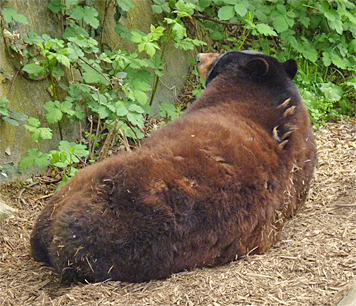
Ursula’s coat has a brown cast to it. Her fur seems more coarse than the other bears, giving her a rather unkempt appearance. This unkempt appearance is key to her identification.
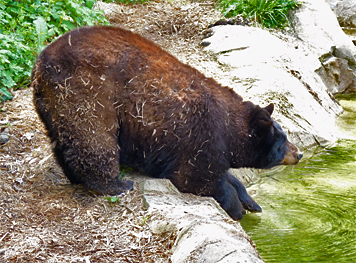
Mimi arrived at the Museum in April of 2006 when she was two years old.
Mimi’s summer coat is two-toned black and brown. The most distinctive marks are two light colored areas on her shoulders and hips. No other bear in the enclosure has these marks!
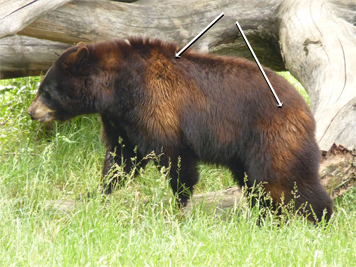
Mimi is sometimes seen in the company of Gus, the only male bear in the enclosure.
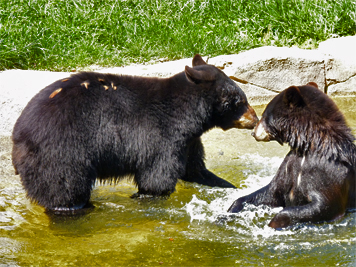
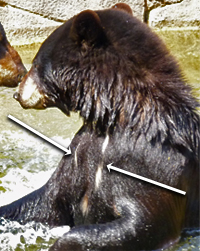
As noted in the photos above and at right, Mimi has two thin, white blazes on her chest. However, these marks are not reliable as they are often difficult to see.
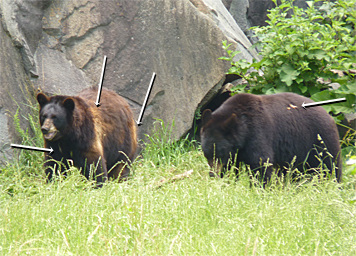
Born in 2005, Virginia arrived at the Museum when only a few months old.
She, like Ursula, seems to prefer her privacy, often retreating to the cliffs above the bear enclosure. When not down on the ground in the enclosure she can sometimes be seen up on the cliff just to the right of the waterfall.
Virginia has a smooth, silky black coat. No other bear in the enclosure has such uniformly black fur.
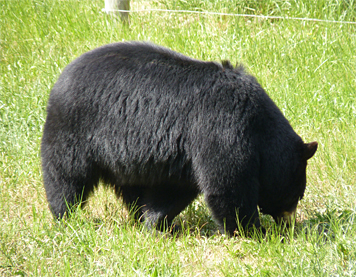
Like Mimi, Virginia has a white blaze. Virginia’s blaze, however, is in the form of a heavy white “V” on her chest.
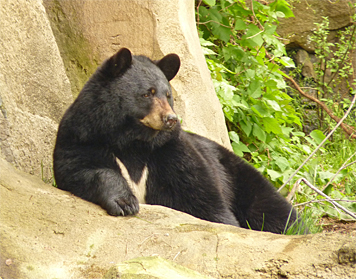
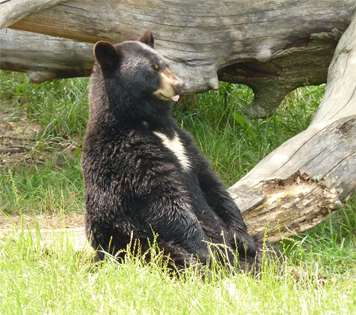
Arriving at the Museum in July of 2006, Gus was just about 5 months old at the time. He is the only male of the five bears on display and is now the largest of the bears in the exhibit, but this size difference is not great and not always apparent, especially when seen alone. His head, feet and legs are proportionately larger than the other bears and at times, this is quite notiecable, even when he is by himself.
Gus is a wanderer and can be found at many locations throughout the enclosure, the hammock, the cliff, under a tree, asleep next to the pool (Ursula’s spot), or just about anywhere else in the enclosure by himself or in the company of the other bears (except Ursula).
The most obvious field marks on Gus are his “blond highlights.” Gus sports a group of light-colored hairs on his back.
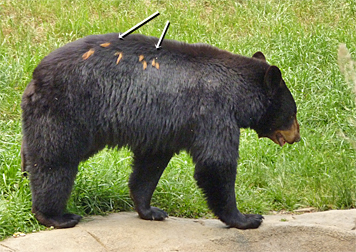
There are more blond hairs on Gus’s right side than his left (see photo of Mimi and Gus next to rock wall above and Virginia and Gus below).
Gus seems to be the more social of the bears here at the Museum and can often be seen interacting with others.
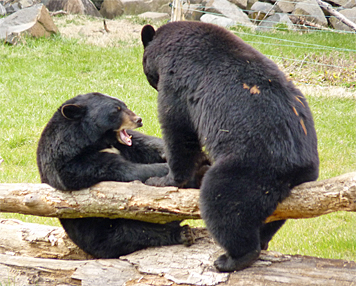
Gus’ social character is such that he would even play (interact in a friendly manner) with Ursula, if the older bear would permit it.
The newest member of the bear clan is Yona (Yona is Cherokee for bear). She was just under a year old when she arrived at the Museum this past January. Yona is easily distinguishable by size, she’s currently the smallest bear in the enclosure. She has a rather spiky hairdo at present but this could change later in the season.
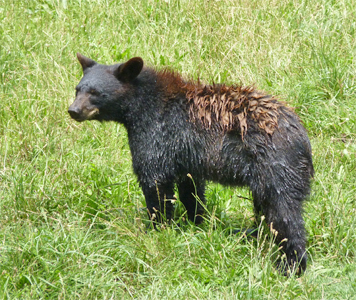
Her size alone should be a reliable field mark in identifying Yona throughout this year.
Gus often interacts (plays) with Yona. The other bears are more likely to be seen encouraging Yona to keep her distance.
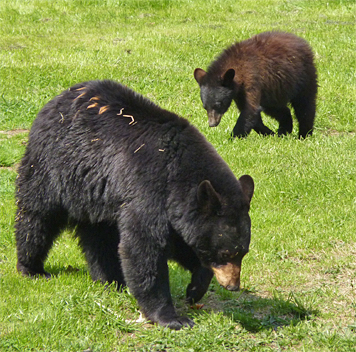
If you don’t see Yona wandering around on the ground, look up!
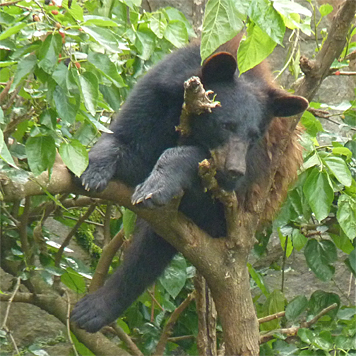
Young Yona also likes to swim. While the other bears do occasionally take a dip in the pool (except Gus, unless food floating on the water forces him in), Yona seems to relish the pastime.
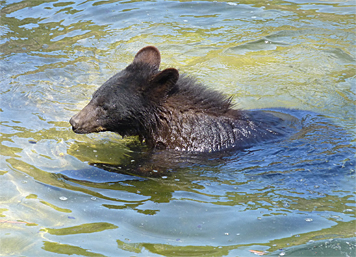
And there you have it. With the information given above you should be able to tell one bear from the other in most situations. However, don’t be discouraged if the next time you’re at the Museum you can’t tell which bear that is lying in the shade under the tree way back at the rear of the bear enclosure. You won’t be able to identify every bear all of the time, it takes practice. But now, you have been given the tools to help you on your way to becoming an expert.
Good luck, and have fun!